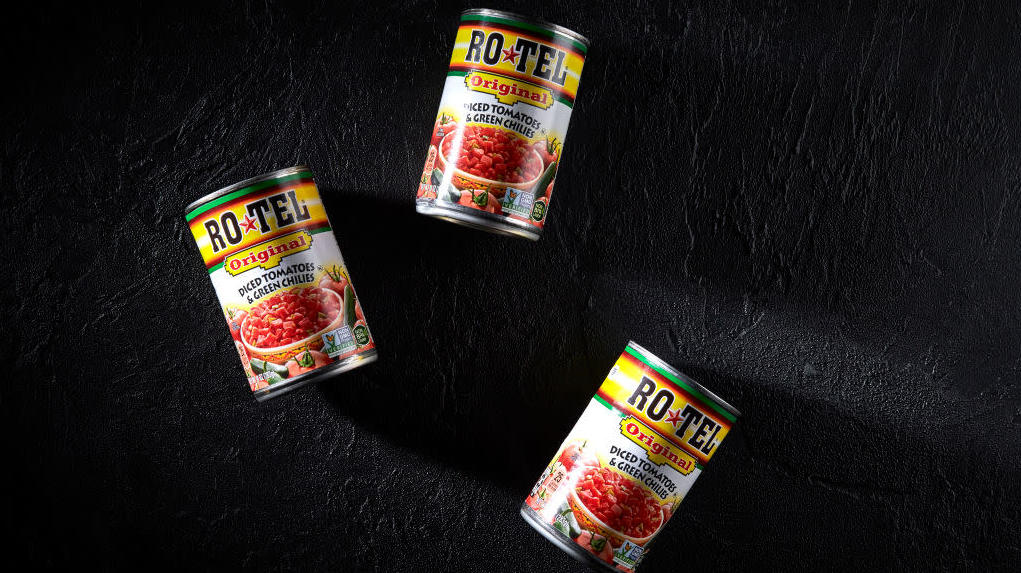How Rotel Became A Crucial Queso Ingredient And Gave Hope To Lazy Cooks Everywhere
I'm not a Texan, but I am the daughter of a Texan and friend to many Texans. That's how I know about Texas queso, that most sacred and musky of cheesy dips that combines Velveeta, peppers, spices, tomatoes, and a can of Rotel. The indoctrinated know that Rotel is a fairly simple canned mix of diced tomatoes and fire-roasted green chilies. But, as Eater recently pointed out, it wasn't always so ubiquitous on the queso scene.
According to Eater, Rotel dates back to 1943, when it originated in Elsa, Texas thanks to a veggie canner named Carl Roettele. For years, Texans had been adapting chile con queso, which originated in 19th-century Mexico. But the traditional recipe involved roasting, peeling, and chopping chilies before sautéing them with the other ingredients. Sounds exhausting, no? Instead, Roettele came up with a grand idea: combining chiles and tomatoes in a ready-made can. He named his invention "RO*TEL," a phonetic pronounciation of his name and a huge power move that I unequivocally support.
Rotel quickly became an essential queso ingredient, rearing its beautiful, pepper-laden head at football games and family holidays. The brand started officially marketing itself as a queso ingredient in 1949. Fast forward to 2002, when ConAgra Foods acquired the brand; then, in 2005, Rotel and Velveeta officially became partners. The beautiful marriage allowed Rotel to reach the Northeastern and Midwestern markets, where you can find it on most store shelves.
Today, Rotel remains relatively unchanged. It's still a simple canned mix of diced tomatoes and fire-roasted green chiles. It packs a little heat, as indicated by the packaging, which boasts a "zesty" and "distinctly regional" flavor. And it's an essential item in many Texan pantries, thanks to the ingenuity of one humble veggie canner. Read the whole article, which is a delight. Personally, I'll never look at a bubbling vat of queso quite the same way.
